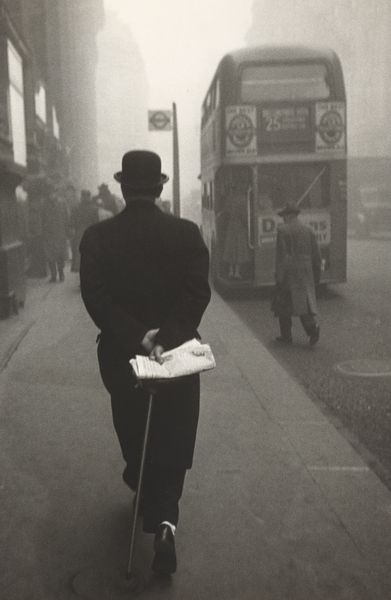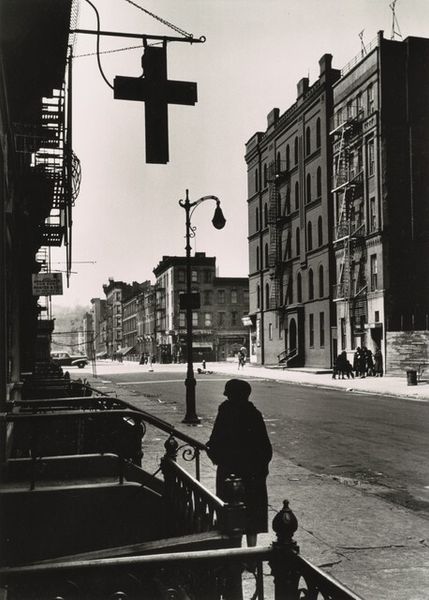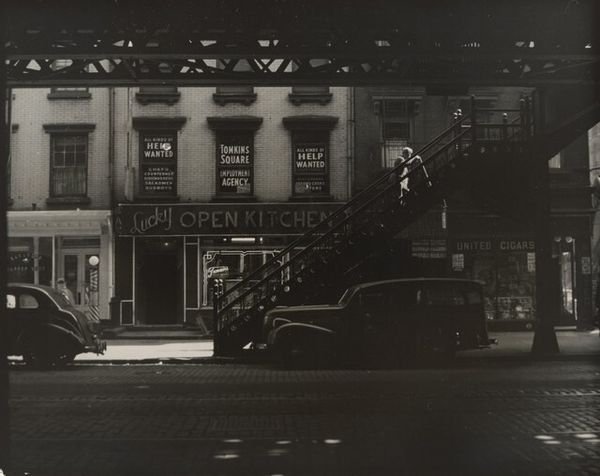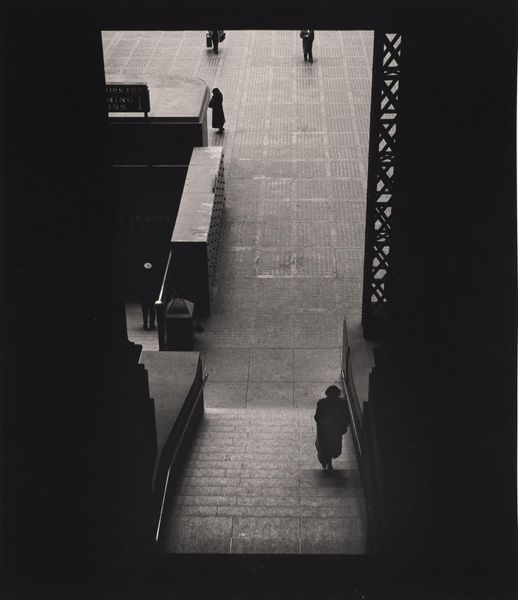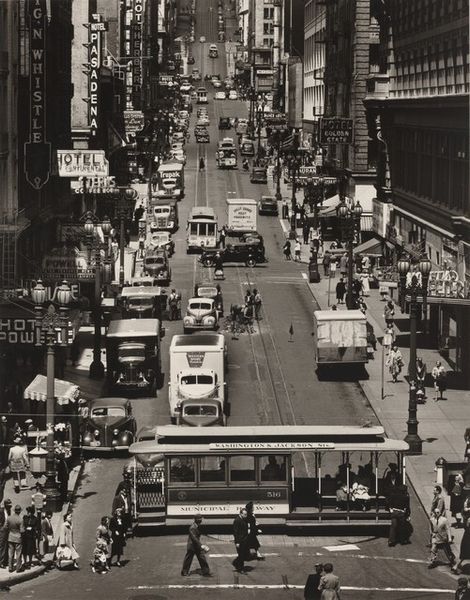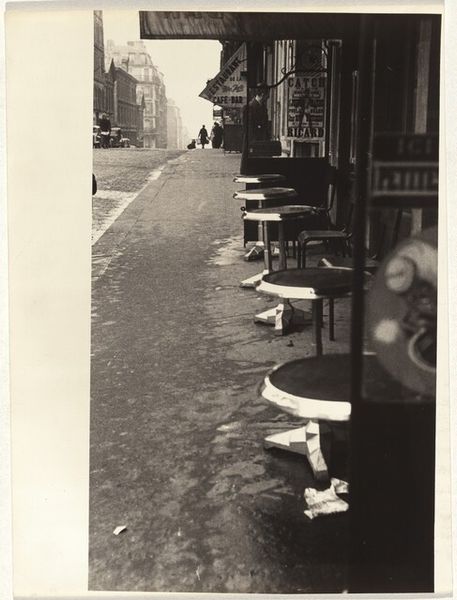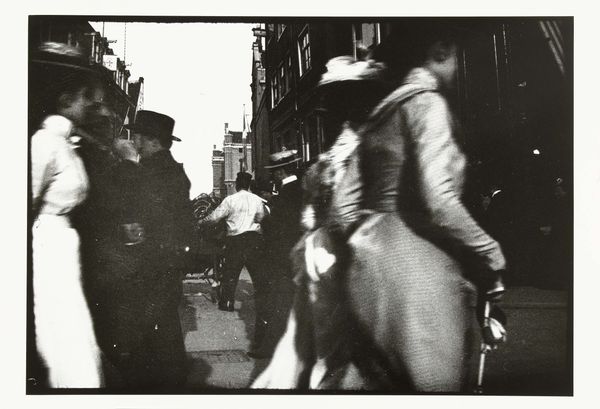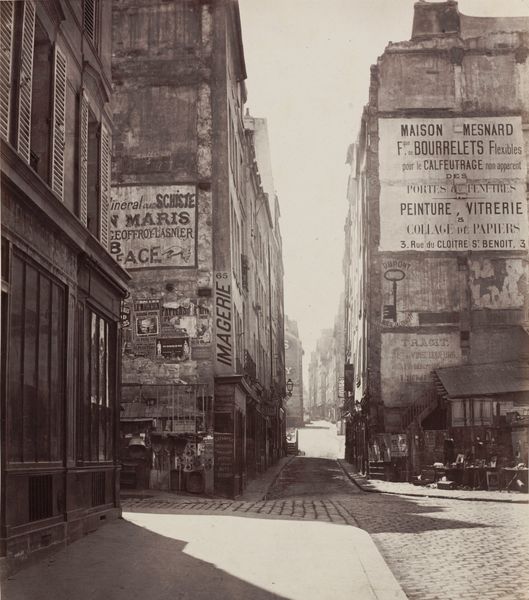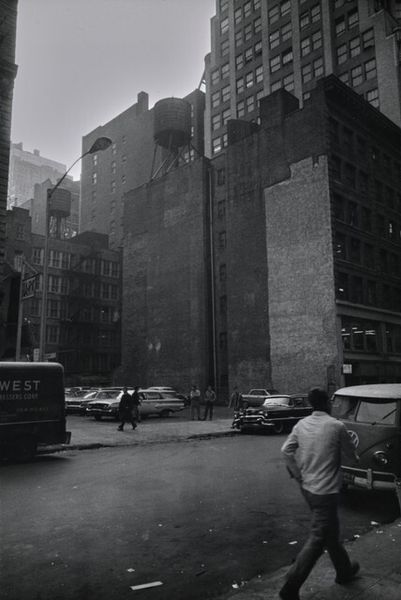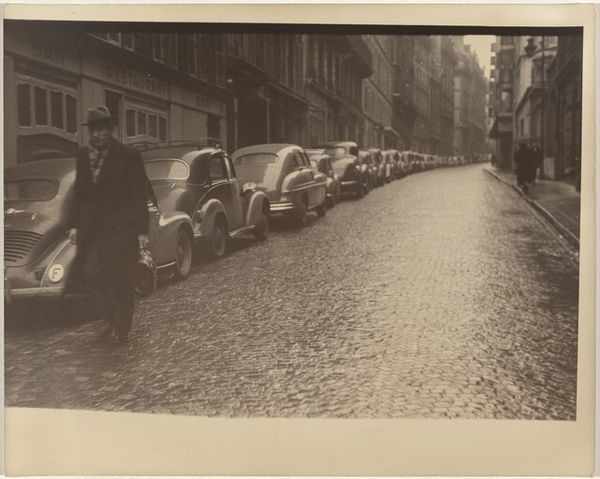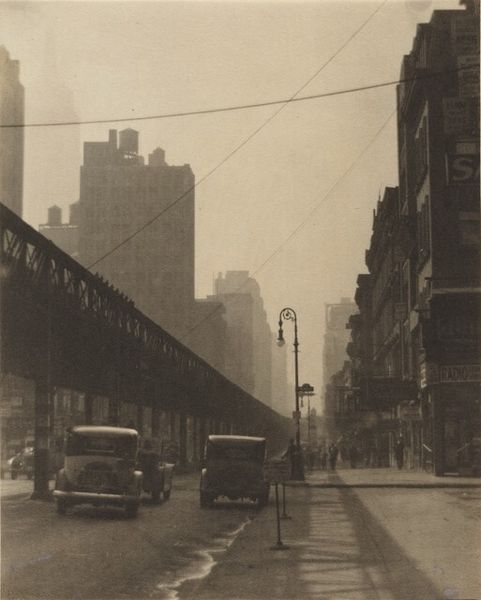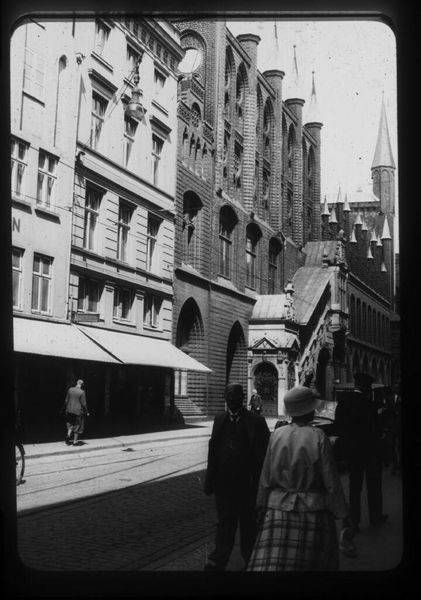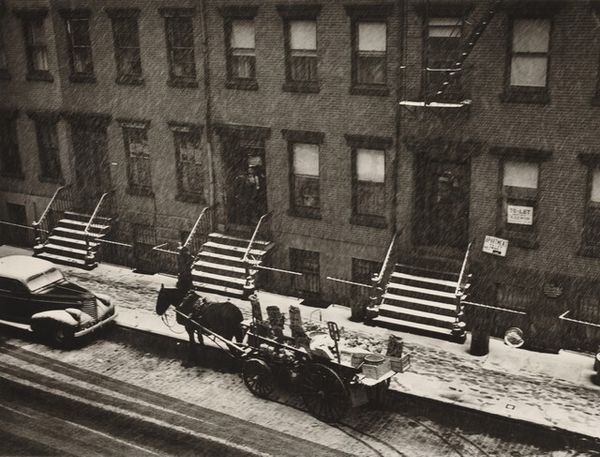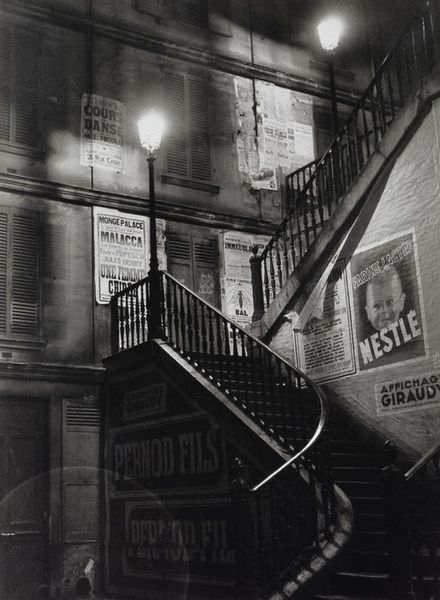
photography, gelatin-silver-print
#
black and white photography
#
street-photography
#
photography
#
black and white
#
gelatin-silver-print
#
monochrome photography
#
cityscape
#
monochrome
#
modernism
#
realism
#
monochrome
Dimensions: image: 14.6 × 17.9 cm (5 3/4 × 7 1/16 in.)
Copyright: National Gallery of Art: CC0 1.0
Curator: Nathan Lerner's "Third Avenue El," created in 1944, is a compelling gelatin silver print. What strikes you first about it? Editor: Immediately, it’s the dramatic light and shadow play across the street. The strong verticals, those cast shadows, they create such a rhythm, dividing the space into these stark planes. There’s an almost oppressive feel to it. Curator: Oppressive, perhaps, but it also speaks to the everyday realities of urban life. The elevated train, suggested by the shadows, physically shapes the lives of those below. We can also consider the limitations of wartime resources—gelatin silver prints became increasingly common during this time. Editor: That's an interesting observation. Beyond the historical material reality of the piece itself and into its semiotics, what about the composition—that receding perspective draws the eye, leading us deeper into the urban canyon, but it never quite resolves, does it? The faces of the figures are obscured; we’re left with anonymity. Curator: Right. Lerner was associated with the New Bauhaus movement, so his engagement with everyday life—cityscapes, ordinary people— aligns with a modernist exploration of the modern human condition. Editor: Yet even beyond its connection with modernism, the high contrast reinforces a sense of alienation that was, and remains, endemic to big city living. Curator: I agree, it powerfully conveys that sentiment. Consider, too, that street photography serves as documentation of social conditions, it acts as a sort of time capsule about life at that period in time. Editor: And, beautifully realized using the formal aspects of the photograph itself—line, tone, texture—to communicate on both a visual and emotional level. The city as a lived, felt space. Curator: Absolutely, viewing this image has further confirmed my interest in Lerner's career and his understanding of a city. Editor: I'm left thinking about the enduring power of stark light and shadow to evoke the essence of urban experience, even today.
Comments
No comments
Be the first to comment and join the conversation on the ultimate creative platform.
